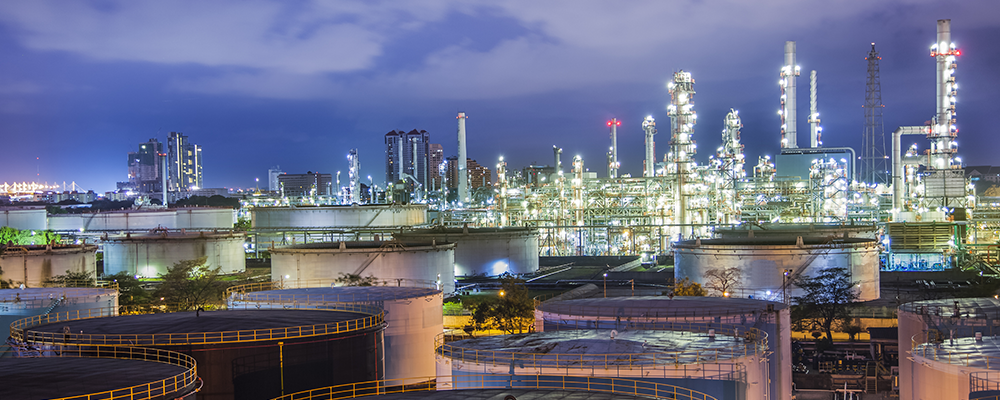
Is your site responsible for controlling potential hazards pertaining to the specification, inspection and maintenance of external floating roofs for storage tanks built to BS 2654(1), BS EN 14015(2) and API 650(3)?
If so, the Health and Safety Executive has just issued a safety notice to help you maintain the integrity of the roof and take precautions to maintain the buoyancy of the structure.
“There has been a recent incident, along with findings from further investigation, that suggest the examination and maintenance of floating roofs is not given sufficient priority,” says the HSE in explanation of the safety notice.
Proper maintenance of external floating roofs for storage tanks is indeed important. After all, failure of a roof can lead to a loss of containment, peeling back the layers of protection and unlocking the door to a major accident.
So let’s break down the safety notice.
What is an external floating roof tank?
External floating roofs are fitted atop of large above ground hydrocarbons storage tanks which typically stand in excess of 20m diameter.
With the grace of oil on water, they float on the surface of the stored fluid. The external roof remains buoyant by way of pontoons encircling their perimeter or as double-deck roofs, with integral chambers to provide support.
Key features include:
- The roof structure has a central open deck which needs periodical draining typically by one or more central drains
- The outer edge of the roof is fitted with at least one seal to retain the hydrocarbon vapour beneath
- A cross-section of a popular design with an outer ring of pontoons (check out the image to the right)
Regulations and specifications
Construction standards require that floating roofs remain buoyant in defined arduous situations.
In the case of BS EN 14015, for instance, the roof must remain afloat with 250mm of water on the centre deck or two adjacent pontoons flooded.
Operators should note that while these requirements are not cumulative, a roof boasting one or more compromised pontoons is more vulnerable to sinking from rainfall.
This is important as the roof may well have listed or even deformed in such conditions, compromising the ability to remove rainwater via the centre drain.
Circumstances of continued rainfall could lead to:
- The roof sinking
- Flooded pontoons
- Permanent damage to the roof
Operators must therefore be able to demonstrate that the roof will remain buoyant and perform in accordance with the original design intent in all operating conditions.
Demonstrating integrity: design calculation
It is incumbent upon operators to have a design calculation which demonstrates that for the fluid stored, the roof will continue to function even in certain fault conditions. These, the HSE says, are defined in the design codes.
Take a single deck pontoon roof, for instance. BS EN 14015 states either two adjacent pontoons flooded or 250mm of water on the centre deck should be accommodated.
Other checks include:
- The operator must make sure that the roof buoyancy calculation uses a sufficiently low specific gravity. API650, for example, states that either a specific gravity of 0.7 is used or the specific gravity of the stored product – whichever is the lower
- Operators must be mindful that for tanks storing relatively light hydrocarbons, excessive vapour pressures can cause upset conditions
- The design calculation should be re-visited to ensure it remains valid if the tank contents are changed and the SG reduced
Single 3″ or 4″ diameter roof-drains
Single 3″ or 4″ diameter roof-drains can be fitted to tanks designed to API 650(3). At low roof levels, the relatively small head leads to a slow discharge rate through the drain. It is therefore vital that the roof does not accumulate excessive water during periods of heavy rain and that it remains sufficiently buoyant at all times.
Operators should be aware that other fittings in the system – such as non-return valves and filters – will further slow the discharge rates unless properly managed and that line restrictions, such as reducers, should be avoided.
In-service examination
Upon carrying out an in-service examination to guard against floating roof failure, check:
- Deck integrity including checks for excessive corrosion
- For pools of standing water that may indicate distortion of the roof
- Roof level, ensuring the deck is not listing by checking cardinal points around the roof perimeter
- Roof seal integrity along with associated fittings, such as foam dams and vents
- Pontoon integrity, including visual inspection and checking for flammable vapour
- Tank roundness and distortion
- Access ways and ladders
Out-of-service examination
Upon conducting an out-of-service examination, check:
- That pontoons remain intact for the duration of the following period in-service.
- That pontoons remain either ‘liquid tight’ or ‘vapour tight’
- Internal bulkheads and division plates as well as the primary boundary of the roof and pontoons
- The roof structure following any repairs or modifications
Routine monitoring
Regular operator checks in the form of routine monitoring will further assure roof integrity, allowing any possible problems to be detected early on.
Operators should carry out visual checks, including:
- The roof deck
- Seal integrity
- Pontoon hatches
- Secure earthing
In carrying out routine checks, put in place a system whereby the findings are logged within the maintenance system.
Level indication and alarm
In some cases, separate independent level indication of both the roof position and liquid level can cast light on potential problems.
The HSE says making a comparison of a roof position with liquid level over a period of time can show gradual loss of buoyancy.
Where reasonably practicable, duty holders should therefore provide a deviation alarm so that a warning is given if there is excessive differential movement of the roof and liquid.
Relevant legal documents include:
- Health and Safety at Work etc Act 1974
- Provision and use of Work Equipment Regulations 1998
- Control of Major Accident Hazards Regulations 1999
- Dangerous Substances and Explosive Atmospheres Regulations 2002
Related reading:
- HSE issues 20 asbestos improvement notices to schools
- Proposed safety measures designed to protect volunteer workers
- Cumbrian oil firm prosecuted after worker’s fall
- Free personal protective equipment training for your site
- CSB calls for greater regulation of reactive chemicals
- 5 reasons to take the NEBOSH ITC in oil and gas safety Grimsby


